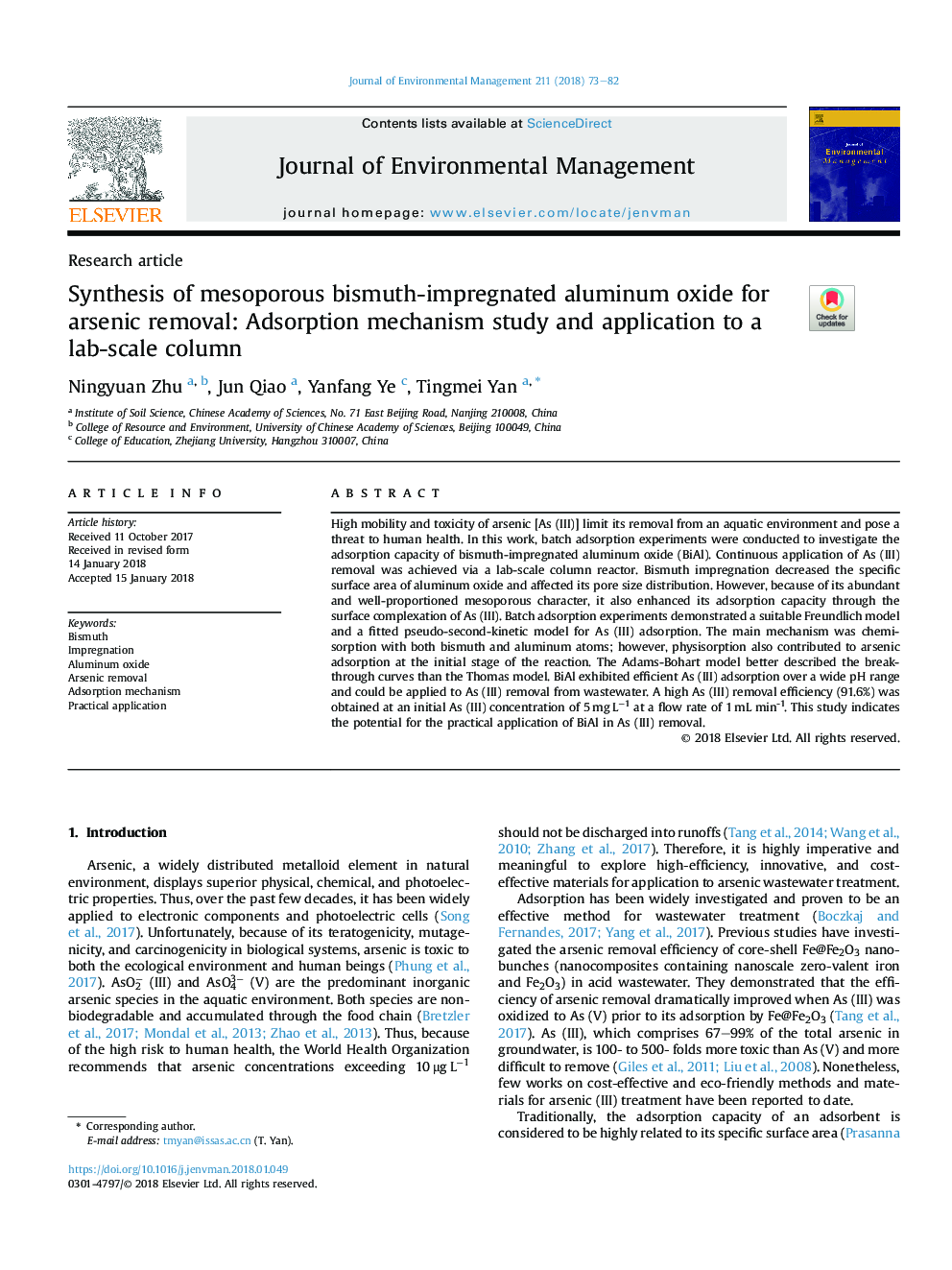| Article ID | Journal | Published Year | Pages | File Type |
|---|---|---|---|---|
| 7477996 | Journal of Environmental Management | 2018 | 10 Pages |
Abstract
High mobility and toxicity of arsenic [As (III)] limit its removal from an aquatic environment and pose a threat to human health. In this work, batch adsorption experiments were conducted to investigate the adsorption capacity of bismuth-impregnated aluminum oxide (BiAl). Continuous application of As (III) removal was achieved via a lab-scale column reactor. Bismuth impregnation decreased the specific surface area of aluminum oxide and affected its pore size distribution. However, because of its abundant and well-proportioned mesoporous character, it also enhanced its adsorption capacity through the surface complexation of As (III). Batch adsorption experiments demonstrated a suitable Freundlich model and a fitted pseudo-second-kinetic model for As (III) adsorption. The main mechanism was chemisorption with both bismuth and aluminum atoms; however, physisorption also contributed to arsenic adsorption at the initial stage of the reaction. The Adams-Bohart model better described the breakthrough curves than the Thomas model. BiAl exhibited efficient As (III) adsorption over a wide pH range and could be applied to As (III) removal from wastewater. A high As (III) removal efficiency (91.6%) was obtained at an initial As (III) concentration of 5â¯mgâ¯Lâ1 at a flow rate of 1â¯mL min-1. This study indicates the potential for the practical application of BiAl in As (III) removal.
Related Topics
Physical Sciences and Engineering
Energy
Renewable Energy, Sustainability and the Environment
Authors
Ningyuan Zhu, Jun Qiao, Yanfang Ye, Tingmei Yan,
